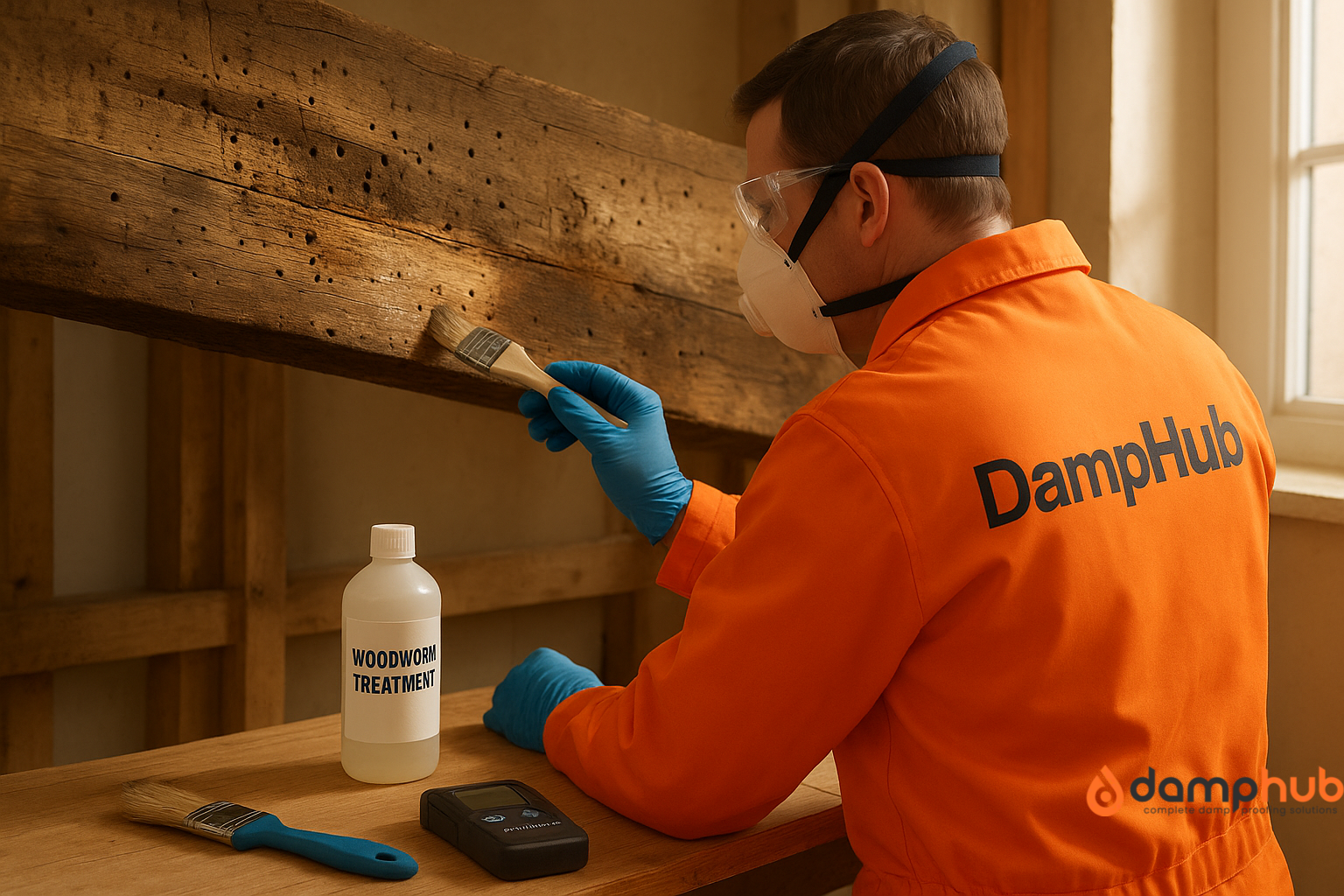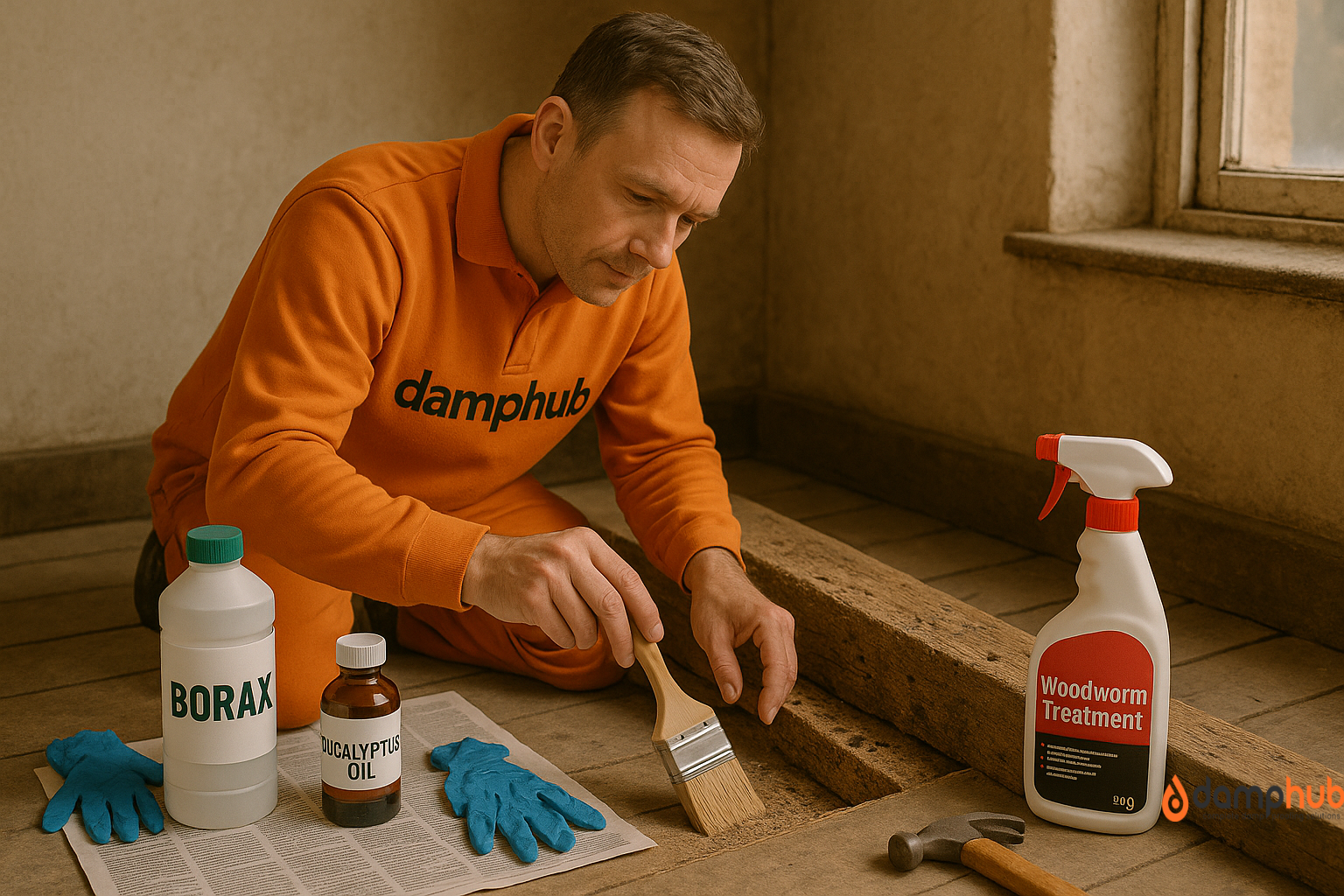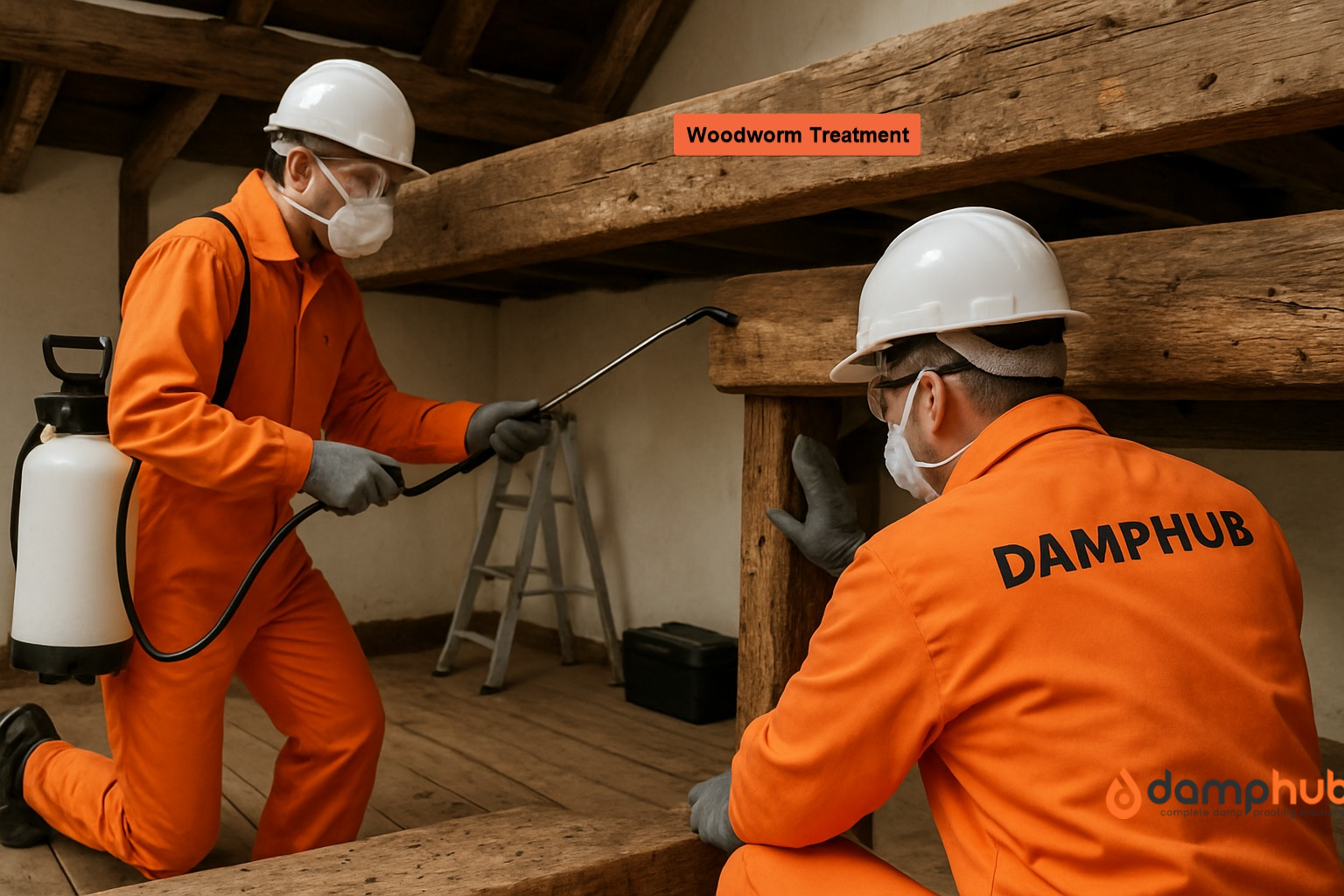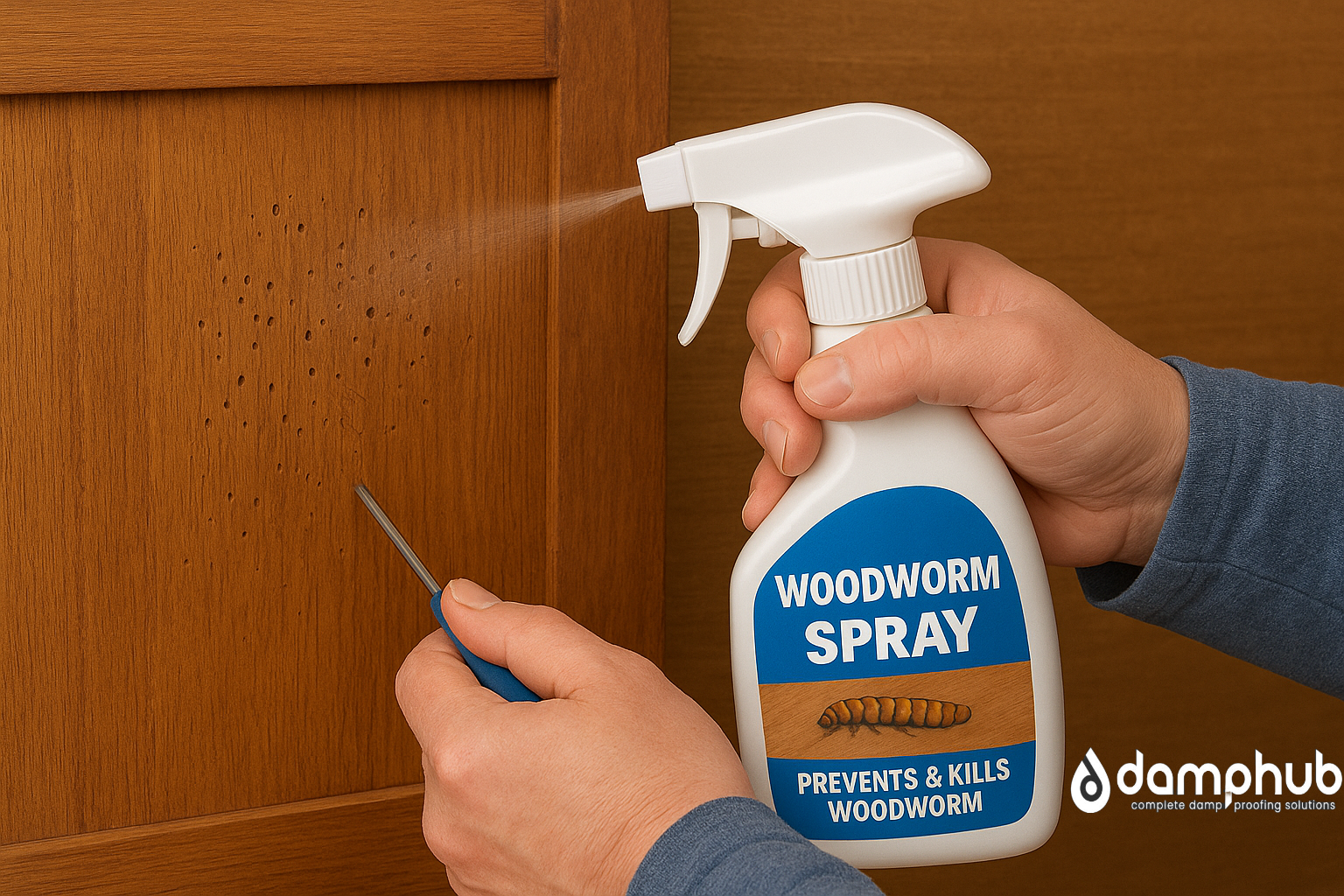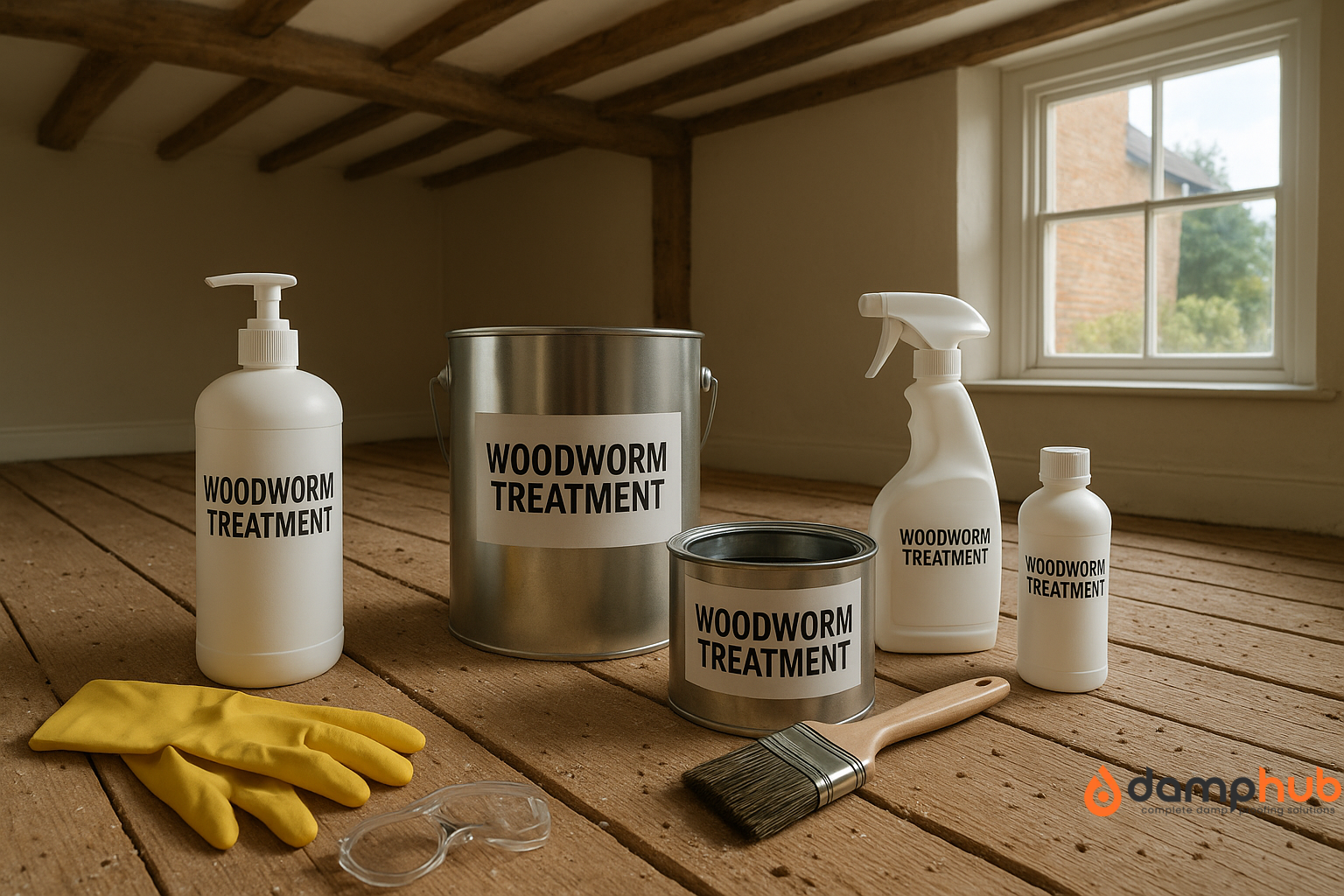
There’s a reason people panic when they find tiny holes in their floorboards or furniture. Woodworm isn’t like a squeaky door hinge you can ignore for a few months. It’s a slow, quiet wrecking crew. The larvae chew through timber from the inside, and by the time you notice the damage, they’ve probably been at it for years.
Here’s the part most people don’t like to hear: picking the wrong treatment can be just as bad as doing nothing. A cheap, unsuitable product might kill a few beetles on the surface and leave the larvae untouched inside. You’ll think the problem’s gone… until it isn’t. And that’s money, time, and possibly entire pieces of furniture down the drain.
The good news? The right product, applied properly, really can stop the damage, protect the wood for years, and save you from a much bigger bill later.
2. What Is a Woodworm Treatment Product?
If you’ve never had to deal with it before, the phrase “woodworm treatment” sounds vague. Is it a spray? A paint? A poison? Well… it can be all three, depending on what’s in it.
Most UK treatments work by soaking into the timber to reach the larvae deep inside. The active ingredients are the real workhorses:
- Boron-based – water-soluble, penetrates well, kills larvae and adult beetles, and gives long-term protection. Often the first choice for big woodworm infestations.
- Permethrin-based – a contact insecticide that’s great for killing adults and surface larvae, but doesn’t soak as deeply as boron.
- Combination formulas – blend of boron and permethrin for a “belt and braces” approach.
- Natural oils/borax – more eco-friendly but generally slower and less reliable for serious infestations.
These treatments don’t just kill what’s there — many leave a protective layer in the wood fibres to stop the next generation from moving in.
3. How Do I Know Which Woodworm Treatment Product I Need?
You’ve got to match the product to the problem. That means thinking about a few things before you start:
- Severity – If you’ve only found a few exit holes and they’re not fresh, a light surface treatment might be fine. If you can push a screwdriver into crumbly wood, you need something strong and penetrating.
- Type of wood – Softwoods like pine drink in liquid treatments easily. Dense hardwoods like oak might need more work (or drilled injection) to get the treatment inside.
- Location – Loft beams and floorboards are one thing; a delicate antique chair is another. You’ll want a formula that’s safe for the finish.
- Safety concerns – Got pets, small kids, or respiratory issues in the household? That will narrow your choices.
DIY vs pro:
- If it’s a small area, accessible, and you’ve caught it early, DIY is fine.
- If the damage is widespread, in load-bearing beams, or if you can see fresh frass (wood dust) falling every week, get a professional. They’ve got the high-strength stuff that isn’t on the B&Q shelves.
Related article: How to Apply Woodworm Treatment: Your Friendly Guide
4. What Are the Different Types of Woodworm Treatment Products?
Not all treatments are created equal. You’ll find a few main types:
- Injection treatments – These come as liquids or gels. You drill into the wood and pump the treatment straight inside. Best for deep infestations or dense hardwood./
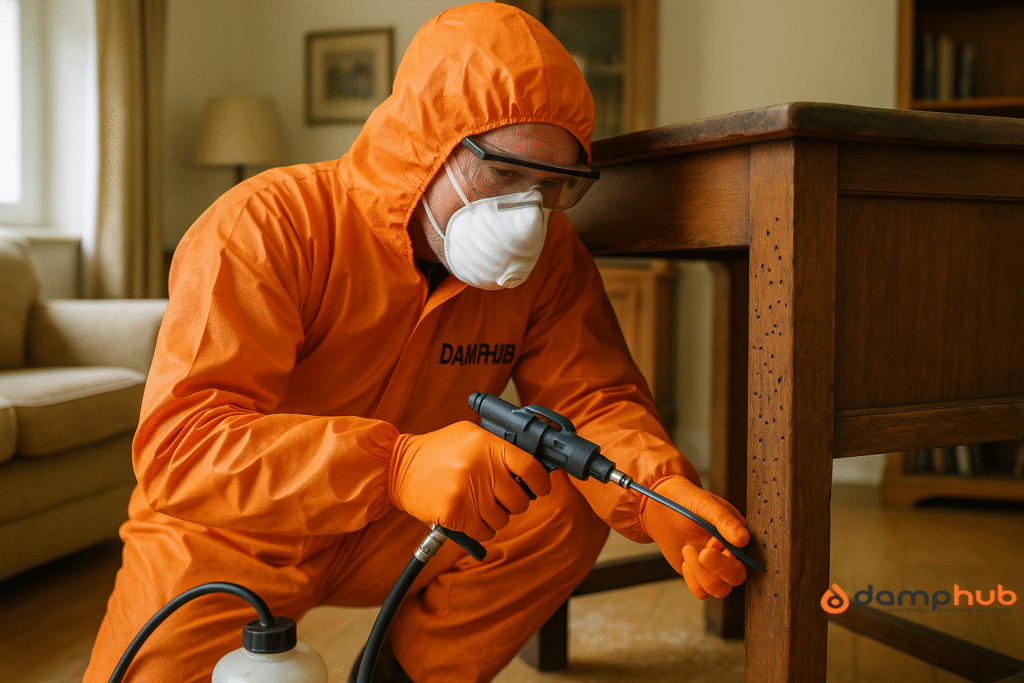
- Liquid treatments – The classic choice. You brush or spray them on, and they soak into the timber. Great for floors, joists, furniture — basically anything with an exposed surface.
- Gels and pastes – Thicker, so they cling to vertical surfaces and penetrate slowly. Often used for big beams where dripping is a pain.
- Fumigation/foggers – Fill a space with insecticidal vapour. Effective against adult beetles, but doesn’t soak into wood — and not a DIY option unless you’re dealing with something like an unused shed.
- Natural/eco options – Borax, orange oil, neem oil blends. They can work for mild problems, but don’t rely on them for structural timber.
5. Which Woodworm Treatment Products Work Best in the UK?
Here’s a side-by-side comparison of well-reviewed, easy-to-find UK woodworm treatment products that work:
| Product | Active Ingredient | Coverage | Application | Avg. Price (1L) | Protection | Notes |
|---|---|---|---|---|---|---|
| Rentokil Woodworm Killer | Permethrin | ~8m² | Brush/Spray | £12–£15 | Up to 5 years | Readily available; good for small jobs. |
| Barrettine Premier Woodworm Killer | Permethrin | ~8–10m² | Brush/Spray | £10–£14 | 5 years | Low-odour, popular for furniture and flooring. |
| Boron Ultra 12 | Disodium octaborate | ~5m² | Brush/Spray | £15–£20 | 10+ years | Deeper penetration; ideal for serious infestations. |
| Cuprinol Woodworm Killer | Permethrin | ~8m² | Brush/Spray | £13–£16 | 5 years | Trusted brand; light smell. |
| Lignum Pro I | Boron + insecticide mix | ~4–5m² | Injection/Brush | £18–£25 | 10 years | Pro-grade; often used by surveyors. |
6. How to Use a Woodworm Treatment Product Safely
Don’t just rip the lid off and go for it. Prep matters.
- Clear the area – Dust sheets down, valuables moved, surfaces covered.
- Ventilation – Open windows or work outside if possible.
- PPE – Gloves, mask, goggles. Even “low odour” doesn’t mean you want it in your lungs.
Application tips:
- Clean the wood — brush off dust and debris so the treatment can soak in.
- Apply evenly, paying attention to edges, ends, and any visible holes.
- For deep infestations, drill into the wood and inject directly.
- Let the first coat soak in before adding another if recommended.
Drying times vary — some are touch-dry in an hour, others need a full day. Always check the label to see how the woodworm treatment works.
7. Can I Use a Woodworm Treatment Product on Painted or Varnished Wood?
Short answer: not without some prep.
Treatments need to soak into bare wood. Paint, varnish, or wax is basically a raincoat for timber — nothing gets through. That means you’ll need to strip it back, at least in the affected areas.
If you’re treating something like an antique table leg, strip carefully and keep the finish in mind for re-coating later.
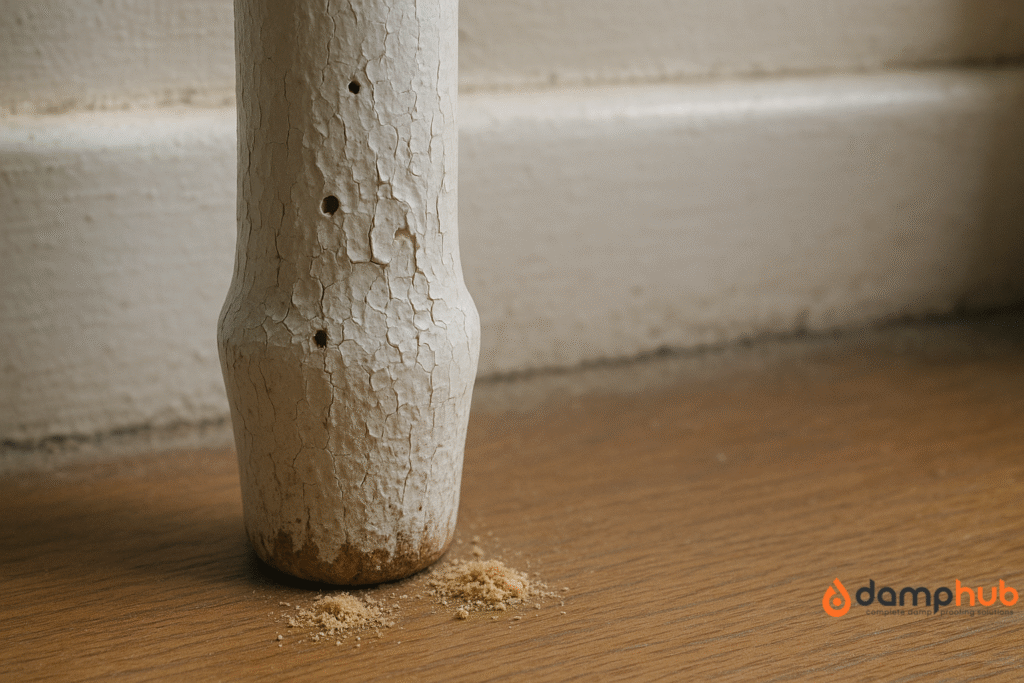
8. How Long Does a Woodworm Treatment Product Last?
Most decent products give at least five years of protection. Boron-based can last ten or more if applied well.
But — and it’s a big but — damp, poor ventilation, or botched application will shorten that lifespan dramatically. If the timber gets wet regularly, you might be back to square one sooner than you’d like.
9. Are Woodworm Treatment Products Safe for Pets and Children?
Permethrin and boron aren’t things you want in a toddler’s snack or a dog’s fur.
For safety:
- Keep pets and kids out of the room while treating.
- Wait until the product is completely dry before re-entering.
- Ventilate for a good few hours (or overnight) after application.
Some boron formulas are lower in toxicity, but still, better safe than sorry.
Our other related article: How to Treat Woodworm in Furniture
10. Common Mistakes When Using a Woodworm Treatment Product
- Overdoing it – Flooding the wood can cause swelling or finish damage.
- Underdoing it – A light mist over the surface won’t reach larvae inside.
- Ignoring hidden spots – The back of furniture, undersides of floorboards — prime beetle hangouts.
- Skipping moisture checks – Woodworm love damp wood. If you don’t fix the cause, they’ll be back.
11. Can I Make My Own Woodworm Treatment Product?
You’ll see DIY recipes online — borax powder in water, vinegar and essential oils, that kind of thing.
They might deter adults for a bit, but they’re no match for a deep, active infestation. You risk losing time while the larvae keep chewing.
For serious damage, stick to a tested commercial product or call a pro.
12. Professional vs DIY Woodworm Treatment Products – Which Is Better?
DIY pros
- Cheaper,
- Immediate,
- Satisfying
DIY cons:
- Limited strength,
- Risk of missing spots,
- Lower results.
Pro pros
- Stronger formulas,
- Experience,
- Warranties.
Pro cons
- High woodworm treatment cost,
- Booking availability.
If the infestation is small and you’re confident, DIY is fine. If the damage is structural, hidden, or spreading, pros every time.
13. Where to Buy a Woodworm Treatment Product in the UK
You’re spoiled for choice:
- DIY stores: B&Q, Wickes, Screwfix all stock decent options.
- Online: Amazon, Toolstation, and specialist pest control shops like Sovereign Chemicals.
- Local timber merchants: They often have boron treatments in larger quantities.
Prices vary — £10 for a basic litre up to £25+ for pro-grade formulas. Watch for coverage rates when comparing.
14. Conclusion – Choosing the Right Woodworm Treatment Product for Lasting Protection
Woodworm is one of those problems where doing nothing is never the cheaper option.
Select the right product, apply it correctly, and you can prevent the damage in its tracks. Wait too long or go for the wrong thing, and you could be pricing up a new floor sooner than you think.
So — look closely at your timber, match the treatment to the job, and don’t skimp on prep. Your floorboards, beams, and furniture will thank you for it… in the quietest way possible.
Need more resources? Also check: How to Treat Woodworm in Floorboards
Common Questions About Woodworm Treatment Products

-
What is the best woodworm treatment product?
For deep, long-lasting protection, a boron-based product like Boron Ultra 12 is excellent. For smaller surface jobs, Barrettine Premier Woodworm Killer is a popular pick.
-
Can you treat woodworm yourself?
Yes — if the infestation is small and the timber is easy to access. Large or structural problems are better handled by a pro.
-
Do woodworm treatment products kill all stages of the beetle?
Boron and combination formulas kill larvae inside and adult beetles on the surface. Permethrin alone is more surface-focused.
-
Is woodworm treatment a one-time job?
If applied properly, it can last years — but check treated wood occasionally for fresh holes or frass.
-
How deep does woodworm treatment penetrate wood?
It depends on the product and the wood type. Boron-based liquids can soak several millimetres into softwood in one application, more if you reapply or inject. Dense hardwoods absorb less, so drilling and injecting are often needed for full coverage.
-
Can you inject woodworm treatment into beams?
Yes — and it’s often the best way for big, structural timbers. You drill small holes into the beam and pump the treatment directly inside, which gets it to the larvae that surface brushing can’t reach.
-
What’s the difference between boron and permethrin woodworm treatment?
Boron works both as an insecticide and preservative — it penetrates deeply and keeps killing for years. Permethrin acts quickly on contact but is more surface-level. Many pros use both in combination for a thorough job.
-
How many coats of woodworm treatment do I need?
Most products recommend two coats for untreated wood. For heavy infestations, you might need to reapply after the first has soaked in, especially with boron solutions. Always follow the drying time on the label.
-
Does woodworm treatment smell?
Some permethrin products have a faint chemical smell that lingers for a few hours. Boron treatments are usually odourless. Good ventilation will clear the smell faster.
-
Can I use woodworm treatment on damp wood?
Not effectively. Moisture in the timber stops the treatment from soaking in. You’ll need to dry the wood first, ideally below 20% moisture content, for the treatment to work properly.
-
Can woodworm survive after treatment?
If the product was applied correctly and penetrated well, no — but if you missed hidden areas or didn’t treat damp sources, reinfestation is possible. That’s why follow-up checks matter.
-
How soon after treatment can I paint or varnish wood?
Usually, after 24–48 hours once the treatment is fully dry. Some boron products recommend longer before sealing to ensure deep penetration.
-
Do I have to strip all the paint before using woodworm treatment?
Yes, at least down to bare wood in the affected areas. Treatments can’t penetrate through paint or varnish, so stripping is essential for the product to work.

